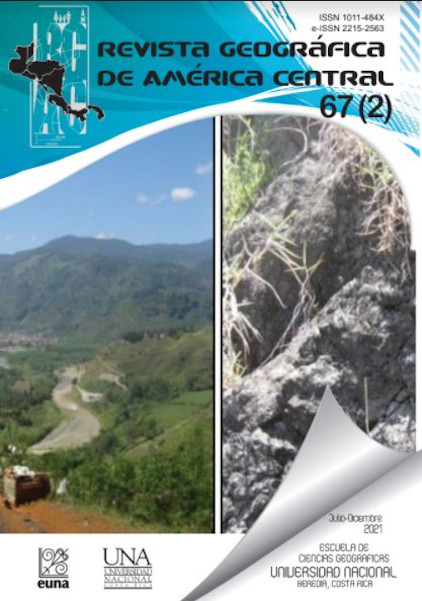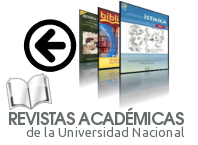Artisanal fishing in the low river Araguaia in Araguatins, Tocantins, Brazil
DOI:
https://doi.org/10.15359/rgac.67-2.9Keywords:
Artisanal Fishing, Riverside, Modernization, Araguaia River, Legal AmazonAbstract
In this research we seek to portray artisanal fishing in the lower Araguaia River, delimiting a spatial scale of the municipality of Araguatins in the north of the State of Tocantins, in the Legal Amazon. It is an Amazonian and cerrado forest environment in the transition areas belonging to the Araguaia-Tocantins hydrographic basin. To do the research we use the qualitative exploratory research method with field research. The results showed that the modernization of the territory was demanded by the technical-scientific introduction in the fishery and in the territory. It modernized the objects of artisanal fishing and, at the same time, modified the way the riverside fishermen deal with the river, introducing new contents in the conception of production and preservation of the environment.
References
A’Sáber, A. N. (2003). Os domínios de natureza no Brasil: potencialidades paisagísticas. São Paulo, Brasil: Ateliê, p.159.
Azevedo, F. F. S. (1987). Annuario histórico, geográfico e descriptivo do Estado de Goyaz para 1910. Brasília, Brasil: Ministério da Cultura, p.240.
Batista, T. F. C. (2005). Resistência induzida ao mogno brasileiro (Swietenia macrophylla King) por meliáceas resistentes no controle da broca (Hypsipyla grandella Zeller, 1848) em consórcio e em sistema agroflorestal (Doctoral dissertation, UFRA). Disponível em: http://repositorio.ufra.edu.br/jspui/bitstream/123456789/781/1/Resist%C3%AAncia%20induzida%20ao%20mogno%20brasileiro.pdf. Acesso em: 08 jun. 2020.
Bonnemaison, J. (1987). Les fondements géographiques d’une identité. L’archipel du Vanuatu. Paris, França, pp.199-205.
Brasil, Ministério da Agricultura (2020). Região pesca. Disponível em: https://spark.adobe.com/page/Cza9NBk3AbHni/. Acesso em: 09 jun. 2020.
Brasil, Ministério da Integração Nacional (2006). RELATÓRIO DO CENSO ESTRUTURAL DA PESCA DE ÁGUAS CONTINENTAIS NA REGIÃO NORTE. Belém-PA.
Brito, E. P. (2009). O papel de Palmas na rede de integração regional. Dissertação de mestrado. UFGD, Dourados, Mato Grosso do Sul, Brasil.
Brito, E. P., & Almeida, M. G. (2017). Sentido e organização do trabalho das quebradeiras de coco no Bico do Papagaio, Tocantins.Geosul,32(63), pp. 229-249. Acesso em: 09 jun. 2020.
Brito, E. P. (2018). SOBRE OS RIBEIRINHOS TOCANTINENSES: história e resistências. InterEspaço: Revista de Geografia e Interdisciplinaridade, 4(14), pp. 33-48. http://dx.doi.org/10.18764/2446-6549.v4n14p33-48
Brito, E. P., & Silva, S. S. (2020). Por entre os castanhais: sujeitos e lugares no povoado fortaleza em São Geraldo do Araguaia, Pará. Caminhos de Geografia, 21(73), pp. 415-428. Disponível em: http://www.seer.ufu.br/index.php/caminhosdegeografia/article/view/49450. Acesso em: 09 jun. 2020.
Castilho, D. (2014). Modernização territorial e redes técnicas em Goiás. (Tese de doutorado). UFG, Goiânia, Brasil.
Dias, CRG e Silva, AP. (2017). Uma rede de pesca artesanal no Rio Araguaia, Tocantins, Brasil. Em Embrapa Pesca e Aquicultura - Artigo em Anais de Congresso (ALICE). In: CONGRESSO BRASILEIRO DE ENGENHARIA DE PESCA, 20., 2017, Florianópolis. Tecnologia e inovação para pesca e aquicultura: anais. Florianópolis: FAEP-BR, 2017. Disponível em: https://ainfo.cnptia.embrapa.br/digital/bitstream/item/164542/1/CNPASA-2017-conbep.pdf. Acesso em: 09 jun. 2020.
Gomes, V. F. (1862). Da cidade da Palma em Goyaz à cidade de Belém no Pará pelo rio Tocantins e breve noticia do norte da Província de Goyaz. Revista Trimestral do Instituto Histórico Geographico e Etnográfico do Brasil, 25, pp.485-513.
Lira, T. M., & Chaves, M. D. P. S. R. (2016). Comunidades ribeirinhas na Amazônia: organização sociocultural e política. Interações (Campo Grande), 17(1). Disponível em: http://www.scielo.br/pdf/inter/v17n1/1518-7012-inter-17-01-0066.pdf . Acesso em: 25 abril. 2020.
Moss, G.& Moss, M. (2007). Relatório Projeto Brasil das Águas. Sete Rios, São Paulo.
Silva, A. P., Ummus, M., & Tardivo, T. (2017). Produção e sazonalidade das principais espécies capturadas pela pesca artesanal no rio Araguaia/TO. Embrapa Pesca e Aquicultura-Boletim de Pesquisa e Desenvolvimento (INFOTECA-E). Disponível em: https://ainfo.cnptia.embrapa.br/digital/bitstream/item/165181/1/CNPASA-2017-bpd20.pdf. Acesso em: 09 jun. 2020.
Silva, A. P., & de Farias, E. G. G. (2017). Caracterização participativa da frota pesqueira do Rio Araguaia–Tocantins, Brasil. Magistra, 29(1), pp. 80-90. Acesso em: 09 jun. 2020.
Tocantins (1990). Diagnóstico sócio-econômico-administrativo. Palmas, Tocantins, Brasil.
Tocantins (NATURATINS). (2019). Portaria NATURATINS nº 270 DE 21/10/2019. 2019. Disponível em: https://www.legisweb.com.br/legislacao/?id=383849. Acesso em: 21 maio. 2020.
Ummus, M., Silva, A. P., & Paz, L. D. S. (2018). Mapeamento participativo das rotas de pesca na margem tocantinense do rio Araguaia. In Embrapa Pesca e Aquicultura-Artigo em anais de congresso (Alice). In: ENCONTRO NACIONAL DOS GEÓGRAFOS, 19. 2018, João Pessoa. Pensar e fazer a geografia brasileira no século XXI: escalas, conflitos socioespaciais e crise estrutural na nova geopolítica mundial: anais eletrônicos. São Paulo:
AGB, 2018. Disponível em: https://ainfo.cnptia.embrapa.br/digital/bitstream/item/191520/1/CNPAF-2018-eng.pdf. Acesso em: 09 jun. 2020.
Valverde, O. (1985). Estudos de Geografia Agraria brasileira. Petrópolis, Rio de Janeiro, Brasil: Vozes, p.268.
Published
How to Cite
Issue
Section
License
Proposed policy for journals offering Open Access
Authors publishing their works in the Journal acknowledge and agree to the following terms:
a) Authors retain the copyrights to their works and guarantee the Journal the right to be the first to publish their works, under the Creative Commons License Attribution-NonCommercial-ShareAlike 4.0 International, CC BY-NC-SA 4.0 International (https://creativecommons.org/licenses/by-nc-sa/4.0/deed.es), which allows others to share works upon complying with the acknowledgment of authorship and mention of the Journal as the original publisher of the work.
b) Authors are permitted to separately establish additional agreements for the non-exclusive distribution of the official edition of the work published in the Journal (for example, authors may desire to place the work in an institutional repository or incorporate it into a book that is to published elsewhere) so long they acknowledgment to recognize the Journal as the original publisher. The aforementioned additional agreements must respect the terms of the non-profit character and sharing philosophy of the original license (CC BY-NC-SA 4.0 International, https://creativecommons.org/licenses/by-nc-sa/4.0/deed.es).
c) Authors are encouraged to archive the post-print or editor/PDF version in Open Access repositories.







 REVGEO is licensed under https://creativecommons.org/licenses/by-nc-sa/4.0/deed.es
REVGEO is licensed under https://creativecommons.org/licenses/by-nc-sa/4.0/deed.es
.svg_4.png)

_(1).png)
_(1)_(1)_(1)_1.png)
(2)(1)(1)(1).png)
